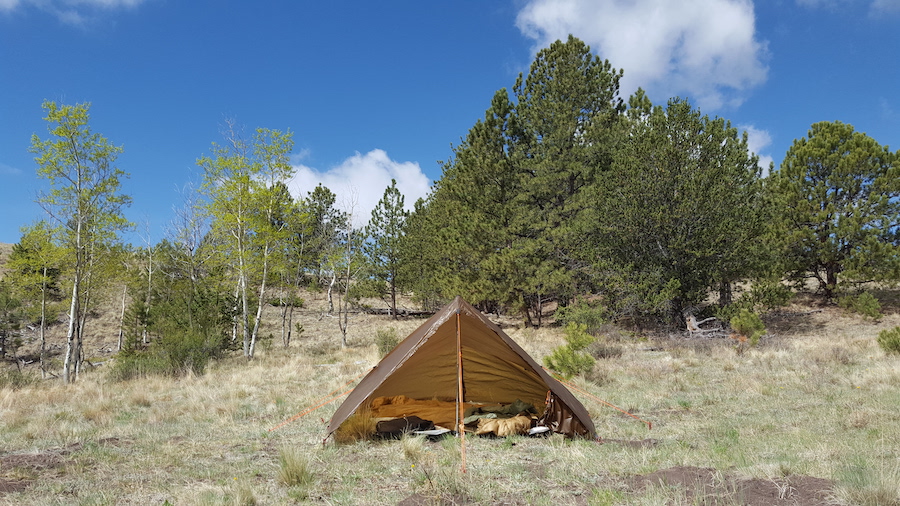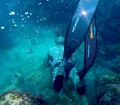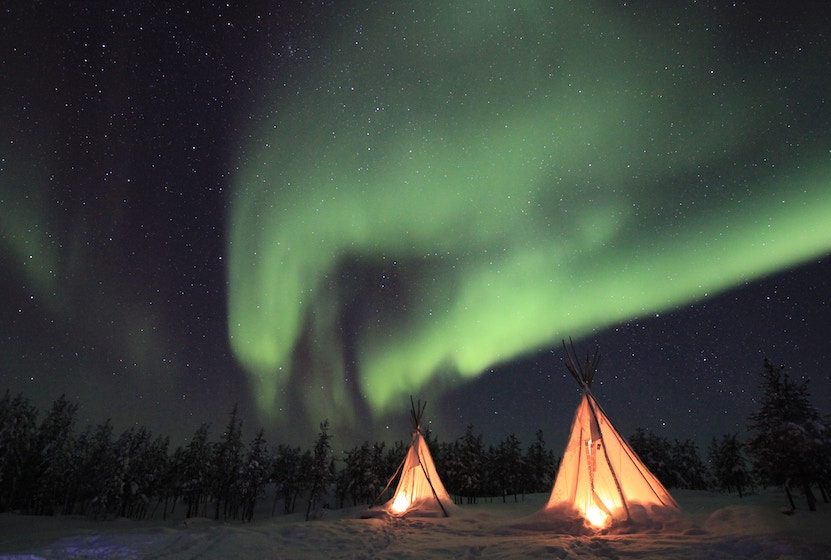“Location, location, location.” It’s the expression commonly used in real estate. Where and how your new home is situated is paramount. Location, and all the factors associated with it, really is everything. Location matters not only the realm of real estate but also in campsite selection. When you venture outside and into the great outdoors, you carry your home with you in the form of a portable shelter. Where you place it will determine your level of comfort, security, and enjoyment. It’s easy to simply drop where you stop and and call it a night after completely exhausting yourself or to satisfy someone in your party but taking the time to carefully select your site will make a world of difference. The following guidelines will optimize your campsite and improve your outdoor experience.
Safety:
My training in Sayoc Kali has made my security and that of my loved ones a routine consideration. There are still risks in the woods, situational awareness should be a universal concept and it means always being in tune with your surroundings. When I look for a campsite, I want to ensure that risks are minimized. For instance avoiding steep canyons if there’s a chance of flash floods.
This also means selecting sites away from trails made by humans and animals alike. This will maintain your privacy and you won’t find a bobcat on his way to drink in the middle of the night stopping to give your sleeping bag a sniff. When you go camping, don’t forget to bring your common sense. Be aware of your surroundings, where the quick exits are, and what attractions could bring both animals and humans alike to the area.

Not all problems come from 2 and 4 legged animals. Some hazards are as simple as having “widowmakers” hanging overhead. Leafy branches can hide your camp and offer shade but precariously-hanging dead branches are not. You should also be able to identify harmful plants like poison oak and stinging nettles.

Finally, I like my camp to have an unobstructed vantage point if possible. Besides having a great view you can be prepared if visitors drop by. Many outdoorsmen fall into false sense of security while camping, believing that while they are on vacation nothing bad could happen to them. The reality is, bad things happen to good people who don’t want to see it coming or don’t know it is coming. Your safety should always be a concern, period.
Resources:
It’s logical to want a campsite with sufficient resources. Water is needed for hydration, cleaning dishes, pots, and pans, and for extinguishing fires. Be mindful that running water creates white noise and will limit your ability to hear anyone or anything coming your way. Wood is needed for your campfire and for any crafts you plan on building. Look for sites with ample dead standing trees to harvest. Plants and animals are extremely important for long-term survival situations if you want to stay fed. Something not often mentioned in discussions about campsites is where you gather your resources from. The temptation is present to find a site with ample resources nearby and in camp but you should harvest wood and edibles from outside of camp. Should you suffer an injury in camp or in a survival situation, you will have materials closer at hand to pull from. Keep in mind, the resources you find attractive could also be attractive to dangerous game or others. Select your location wisely.
Wind and Orientation:
The environment is always working against you. In the summer, sunlight can burn you. In the winter, snow can bury and freeze you. Rain, anytime of year is a force to be reckoned with. Knowing which direction the wind will enter your camp from is essential. A smoky fire can be blown into your shelter, wind can send rain drops into the opening of your lean-to, animals can pick up your scent and your camp can become a pity party. This includes burying human scat far from camp and establishing a dedicated latrine area to avoid contamination and the spread of bad bacterial.
You need to know the direction of the prevailing wind and where you can find the best refuge from it. Some land features will amplify the wind, acting like a funnel, and other features will block it. If you are overlanding you vehicle can make a great wind block, just be prepared for it to change when the temperatures drop.
Depending on the time of day, the weather can change as the sun hits the land or when it is replaced by the moon. Speaking of sunlight, how you orient the opening of your shelter will determine if you will catch the first rays of light of the day or the last before nightfall. I personally like waking up with the sun and generally face my shelters in an easterly direction. The wind can also impact the mosquito factor. While mosquitos are found near standing water, the wind that comes off of larger bodies of water can be a constant mosquito deterrent if you camp along the banks.
Other Factors:
Location is important to campsite selection but there are other factors that can impact your decision. Ease of access in and out may be important for those members of your party with limited mobility. Ease of access can also be considered if you are using a vehicle and have to park, tie up, dock, or land it nearby. Your camp should be well suited for both people and equipment.
Flat campsites matter less for those who choose hammocks as they self-level but tent and tarp campers should always consider the pitch of the land. Depending on the camp location, that pitch can mean rolling over onto your camping buddies in the middle of the night or having water runoff come into your camp. Dropping down to a knee can help you better gauge how level your camp is. While you’re down there, look for exposed roots and rocks that can make your peaceful slumber a bumpy night.
There are some sites you will stumble upon that will draw you into them. Natural beauty including scenic vistas, wide open areas, running water, and rugged terrain, all have magnetism and you will be tempted to settle for a spot for the sensation it gives you. Factor in all the aforementioned advice and weigh your options. Perhaps the visual appeal of the land is worth taking some calculated and safe risks. That decision will be up to you.
When you contemplate where you set up camp, don’t forget it is temporary. You eventually want to leave that site and if you follow Leave-No-Trace ethics, you ideally wouldn’t want anyone to know you were ever there. This means nothing left behind including tracks, signs, and impressions. For most, this is an impossibility. Ideally, you should not leave behind any sign to attract others to your secret or optimal site and cleaning up after yourself is not hard.
It’s easy to lose track of life’s priorities in nature. Our health and well-being is positively affected by unplugging from social media and tapping into the land and we can get wrapped up in all the beauty around us. We should always hope for the best but plan for the worst and part of that planning includes where you set up your camp for the night. We go to the woods to recharge and relax but we should never let our guard completely down. The great outdoors is a fantastic teacher but you don’t want it to teach your final lesson in life.

Live Wild Wise and Free !



